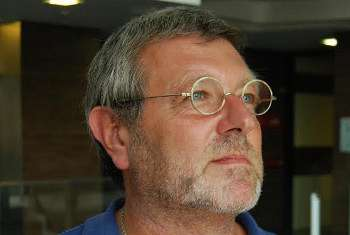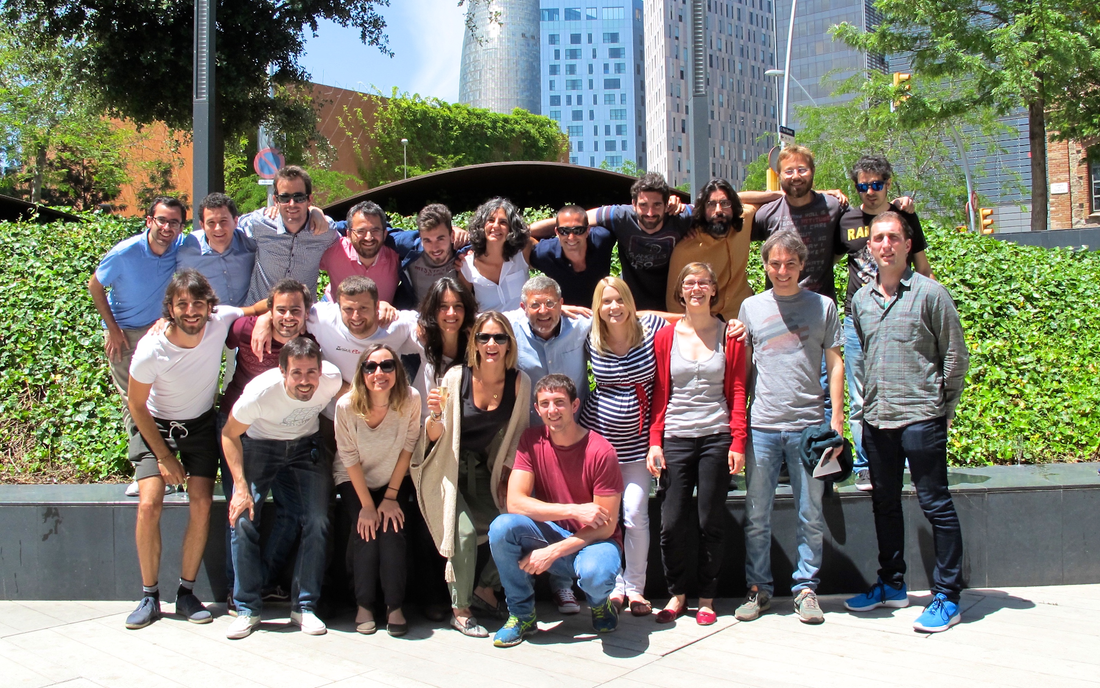|
By Jean Chen --- See Gustavo Deco's keynote OHBM2018 lecture here: https://www.pathlms.com/ohbm/courses/8246/sections/12540/video_presentations/115830 --- Dr. Wilder Penfield once said that “the brain holds within its humming mechanism secrets that will determine the future of the human race.” And yet, most of us would agree that the brain remains the least understood organ. How do we start to understand how the brain works? Prof Gustavo Deco’s approach, one of our OHBM2018 keynote speakers, is to try to build one.
In 2001, Gustavo was awarded the Siemens "Inventor of the Year" prize for his contributions to statistical learning, models of visual perception, and fMRI based diagnosis of neuropsychiatric diseases. He has published 4 books, more than 258 journal publications and 34 book chapters. He has also filed 52 patents in Europe, USA, Canada and Japan. He was awarded an “Advanced ERC” grant in 2012 and he is member of the Human Brain Project (EU flagship).
Jean Chen (JC): As far as I know, you completed your PhD in atomic physics. How did you enter the field of neuroscience? How did these two fields come together for you? Gustavo Deco (GD): When I got my first PhD in Physics in 1987, I thought that I would dedicate my research career to this field. However, after a postdoc at the University of Bordeaux in France and a two-year (1988 to 1990) postdoc from the Alexander von Humboldt Foundation at the University of Giessen in Germany, I found my focus shifting. I was absolutely fascinated by neuroscience and neuropsychology and decided to change my focus. Very broadly, I was drawn to these fields and to the simple question of how the brain works. I want to understand how the brain processes information. I wanted to understand how the brain works. I was, and I am now, convinced that a good formation in physics, especially in theoretical physics, is absolutely an advantage for investigating the brain. For example, in my research I have used a lot of tools from Physics, such as statistical physics, nonlinear dynamics, etc. I went to Munich, and began working for Siemens in their research center. It was there that I started my career in Neuroscience. At Siemens, I created one of the first Computation Neuroscience groups in Germany. In 1997, I received a PhD in Computer Science from the Technical University of Munich (Dr. rer. nat. habil.). In 2001, I received a PhD in Psychology (Dr. phil) from Ludwig-Maximilian-University of Munich. JC: Your interests are broad, and you have made important contributions to computational neuroscience, neuropsychology and psycholinguistics, to name a few. How would you describe the importance of mathematics to neuroscience and psychology research, in the present and future? GD: We cannot build models of the brain without math. We cannot model cognitive processes without math. To sum it up, I'm absolutely convinced of the necessity of mathematics for being able to express in a quantitative and systematic way the laws that regulate the functioning of the brain. The main reason or intuition, is that we are dealing with a huge, complex, nonlinearly coupled and stochastic system (involving billion of neurons and synapses that are coupled, stochastic and nonlinear). It is impossible to intuitively "speak" or "describe" such systems (even a simple system of two feedback-coupled neurons is difficult!), but we can understand and study them by expressing and investigating explicitly the equations, math, describing the brain. If we renounce that, we do only phenomenology… and we know what we can expect from that… nothing. JC: I also understand that your most cited research focuses on computational modeling of spontaneous neural activity, the foundation of resting-state networks, and this work is incorporated into the Virtual Brain Project. What is the Virtual Brain Project, and how did it get started? GD: Yes, I was very active in modeling the whole brain (now not only spontaneous activity but also task and different brain states, like sleep and anesthesia). The implementation of those models in a public, easy-to-use platform is fundamental for making the models available to the community, and especially to interested researchers without a strong computational background (eg. clinical researchers). The Virtual Brain Project was a fabulous initiative that started thanks to the McDonnell Foundations and the team working out of many enthusiastic labs. The initiative is led by Randy McIntosh (Toronto), with strong contributions from the labs of Giulio Tononi, Michael Breakspear, Olaf Sporns, Viktor Jirsa, my lab and many others. JC: What is the next step or the main challenge in improving the ability of your computational models to predict biology and behaviour in brain diseases? GD: Neuroscience, especially computational neuroscience, is a new field, and now is the most exciting time for the field. There is everything to discover! We have many of the required elements to create the first theories of computational neuroscience. I'm very interested in whole-brain dynamics and modeling. Neuroimaging has opened an unprecedented window on human brain activity, raising great expectations for novel mechanistic insights into brain function in health and disease to emerge. Unfortunately, the largely correlational findings have not delivered the anticipated outcomes yet. In contrast, a computational framework will allow for causal manipulation of models of multimodal neuroimaging data, opening up for characterisation of biomarkers of disease subgroups and a better understanding of underlying mechanisms. Furthermore, adding a coupled neuromodulator system using receptor binding data will pave the path for novel methods for rational drug discovery in silico. I think the next challenge is to go from correlational neuroimaging studies to what we call, together with Morten Kringelbach (Oxford), causal neuroimaging. So in my view, the challenges are: 1) to develop and refine our novel framework for Causal Whole-brain Neuroimaging Modelling using sophisticated whole-brain dynamical models of multimodal neuroimaging data which can be manipulated off-line in silico to accurately describe causal mechanisms underlying human brain activity; 2) to apply the framework to the diagnosis of neuropsychiatric diseases, and to the design of therapies and their monitoring. In particular, one can use the model to exhaustively stimulate a realistic subject specific fitted whole-brain model in order to detect which type and locus of stimulation is more effective to re-establish a healthy dynamic of the whole brain. JC: What are the main projects that your lab is focusing on currently? GD: The main projects we are working on are the Human Brain Project, many other team projects of the EU, a large project from Germany together with Max-Planck in Leipzig (collaborator: Angela Friderici), and many others… The main issue that I see is to extend whole-brain models beyond just resting state as I described above. JC: Can you provide a few pieces of advice for junior scientists in our field? GD: As I said before, our field is a relatively new field, and now is, in my view, the most exciting time for the field. Junior scientists should study what they want. Don't be influenced by anyone. They should really investigate what motivates them. At this stage in their career, when they are learning how to be good scientists, it is an exciting time and they should take full advantage of it and study what really interests them. But I'm convinced, and so I tell my students, that the 21st century is the century of Neuroscience and Genetics (but especially the former). I left physics and Quantum Mechanics. Although those fields were extremely interesting, challenging and mathematically sophisticated, all the main elements and basic concepts were already developed at the beginning of the 20th century. I always felt jealous of the scientists that were working during those times … Schrodinger, Pauli, Bohr, amongst others, they developed everything!!! I tell my students that I really felt a kind of “romantic nostalgia” for that time. When I switched to Neuroscience, I felt (and still feel) that we are now reliving those same exciting years. We do not have theories, but we have millions of interesting questions and the experimental technology for accessing the right data… So, our task is incredibly important, namely to develop a theory of the brain… I would recommend all the junior researchers to work on that!
0 Comments
Your comment will be posted after it is approved.
Leave a Reply. |
BLOG HOME
Archives
January 2024
|


 RSS Feed
RSS Feed